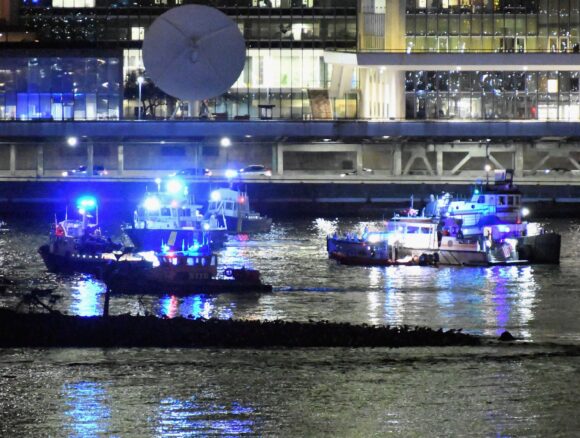The five people who signed up for a helicopter sightseeing flight above New York City three years ago might have expected that aviation regulators were looking after their safety.
But the reality of that fatal flight on March 11, 2018, was very different. The operator had declared that it was an “aerial photography” flight that made it exempt from stricter commercial rules.
After the aircraft lost power and splashed down in the East River, all five drowned because they were tethered into the seats with restraints that hadn’t been approved for safety, investigators concluded.
They were among more than 40 people killed since 2016 in air tours and other flights-for-hire that are exempt from commercial aviation safety rules. The U.S. National Transportation Safety Board plans on Tuesday to call for tighter rules over such flights that operate commercially.
The flights include World War II aircraft, hot-air balloons, planes carrying parachutists and helicopter air tours, according to an NTSB press release on the meeting and recent accident reports.
“These operations are not subject to the same maintenance, airworthiness and operational requirements as other commercial flight operations,” the NTSB said in the release.
Typically carrying passengers for hire triggers more government oversight, but thousands of flights a year sidestep such enforcement through a variety of exemptions.
“This was an issue when I was chairman of the NTSB and is a growing issue,” said Jim Hall, who oversaw a special report on air-tour safety while he headed the safety board in the 1990s.
“Some of these safety issues are under the radar screen of the general public and the media,” Hall said. “We see individuals being killed in these accidents still that do not need to happen.”
In addition to the 2018 helicopter crash, multiple cases illustrate the loopholes, according to NTSB records:
- On Oct. 2, 2019, a 75-year-old B-17 bomber crashed in Windsor Locks, Connecticut, killing seven people. Because it was a historic aircraft, the operator had an exemption from the normal Federal Aviation Administration commercial rules and had had little or no contact with agency inspectors in the two years before the crash.
- A hot-air balloon crashed near Lockhart, Texas, on July 30, 2016, killing all 16 people aboard in the deadliest U.S. aviation accident since 2009. The pilot had multiple health problems that should have prevented him from flying and had taken prohibited drugs, but balloon pilots are exempt from receiving medical checks most others must get.
- A turboprop carrying parachute jumpers slammed into the ground shortly after takeoff from an airport in Mokuleia, Hawaii, on June 21, 2019, killing all 11 people aboard. Even though the parachutists had paid for the flight, it was regulated as if it were being operated by a private pilot.
- A pilot and his passenger died on Oct. 21, 2017, in Four Corners, California, after losing control during a “Top Gun” acrobatic demonstration. Normally, such flights would be considered commercial and subject to higher FAA scrutiny, but this one was being operated under an exception for “flight training.”
The FAA, which is charged with regulating the aviation industry and ensuring safety, is crafting new regulations to tighten oversight of balloon pilots and to require more rigorous internal safety organizations for such operators, it said in an emailed statement.
“The FAA has a number of initiatives under way to improve safety” and has worked closely with NTSB on the issue, it said.
The agency has at times faced challenges. A 2018 law setting policy for the FAA required the agency to “streamline” how it approves flights operated by private owners, which includes many of the cases being reviewed by NTSB.
The NTSB didn’t say what findings or actions it intends to take on Tuesday. The safety board, which has no regulatory powers, typically issues recommendations to the FAA and industry groups.
The FAA and other entities receiving recommendations have no legal obligation to follow them, but they must respond and the suggestions often lead to changes.
Top Photo: At Least 2 Dead As Helicopter Crashes Into New York City’s East River. Bloomberg Photo.
Was this article valuable?
Here are more articles you may enjoy.



 Marsh McLennan Agency to Acquire The Horton Group
Marsh McLennan Agency to Acquire The Horton Group  Homebuilders Cut on ‘Sluggish’ Housing Market, Florida Woes
Homebuilders Cut on ‘Sluggish’ Housing Market, Florida Woes  Progressive Q2 Net Income Skyrockets Over 320%
Progressive Q2 Net Income Skyrockets Over 320%  Beryl’s Remnants Spawned 4 Indiana Tornadoes, Including an EF-3: NWS
Beryl’s Remnants Spawned 4 Indiana Tornadoes, Including an EF-3: NWS 

